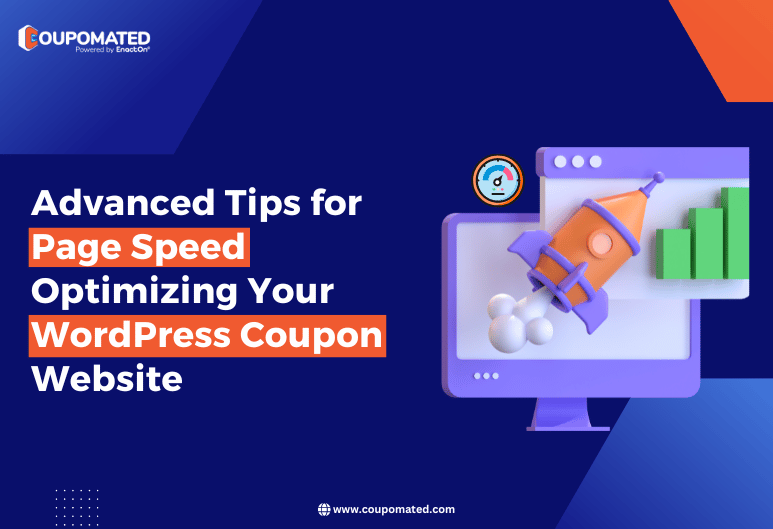
Introduction
A fast-loading coupon website is crucial for a better user experience, but it can also boost your website’s ranking on search engines. Optimizing your site’s speed is paramount, especially for coupon websites, where visitors expect quick access to deals and discounts.
Why Does Page Speed Matter for a Coupon Website?
Page speed is how fast your coupon website loads when someone clicks on it. Let’s understand why this is super important for a coupon website:
- Quick Savings: People visit coupon websites to find deals quickly. If your site is slow, they might leave because they don’t want to wait. They want their discounts now!
- More Visitors: Search engines, like Google, like fast websites. If people see your coupon website as reliable, they are more likely to return for more deals.
- Trust and Reliability: A fast website feels more professional and trustworthy. If people see your coupon website as reliable, they are more likely to come back for more deals in the future.
- Stay Ahead of Competition: There are many coupon websites out there. If yours is faster, visitors might choose your site over others.
- Better Mobile Experience: Many people search for coupons on their phones while shopping. Phones sometimes have slower internet than computers, so a fast-loading site can make a big difference for mobile users.
In short, a fast website means happy visitors, which can lead to more people using your coupons and coming back for more!

How do you check website speed?
Checking the speed of a website is important for improving user experience and SEO. A faster website can lead to better user experience, retention, and conversions. Here’s how to check the speed of a website:
1. Google PageSpeed Insights
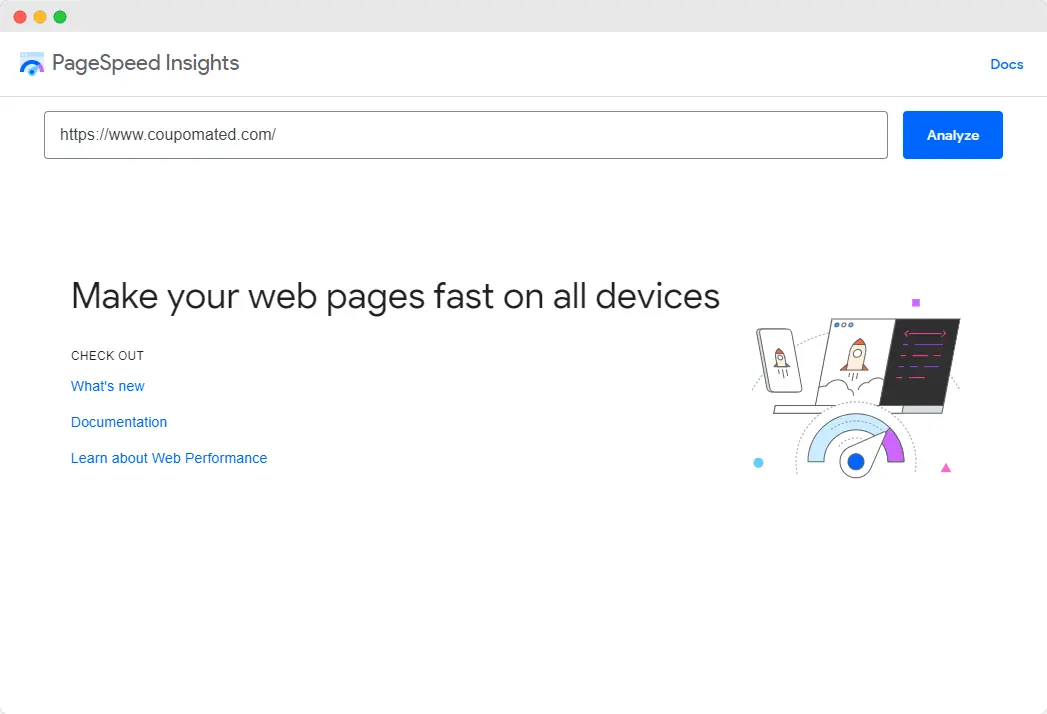
An official tool from Google, PageSpeed Insights provides mobile and desktop speed analyses of a webpage. It gives a score out of 100, with higher scores indicating better Performance. Apart from Performance scores, it offers specific optimization suggestions based on Google’s best practices. Below are the steps to check your coupon website speed.
● Go to PageSpeed Insights.
● Enter the URL of the website you want to test.
● Click “Analyze”.
You’ll receive scores for mobile and desktop, along with suggestions for improvement.
2. WebPageTest
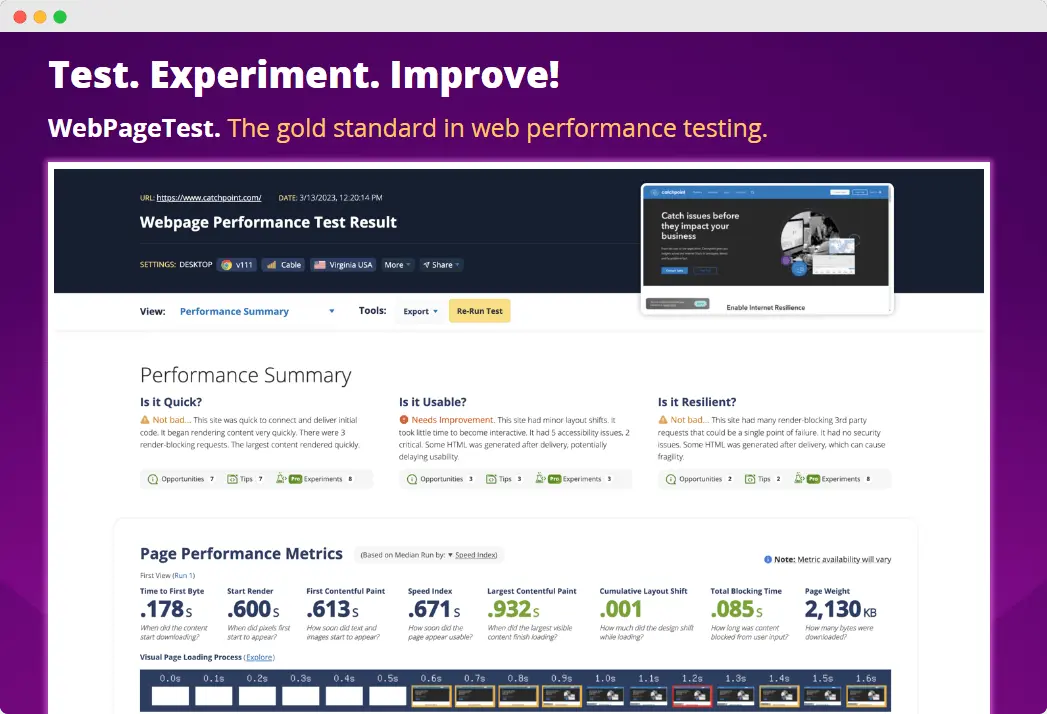
WebPageTest offers a more detailed analysis of a website’s Performance. It allows users to test from multiple locations and using different devices/browsers. The tool provides metrics such as Time to First Byte (TTFB), full load times, and visual breakdowns of content loading sequences (waterfall views). Below are the steps to check your coupon website speed.
● Visit WebPageTest.
● Enter the website URL.
● Choose a test location and browser.
● Click “Start Test”.
This tool provides a detailed breakdown of load times, content type breakdowns, and other advanced metrics.
3. GTmetrix
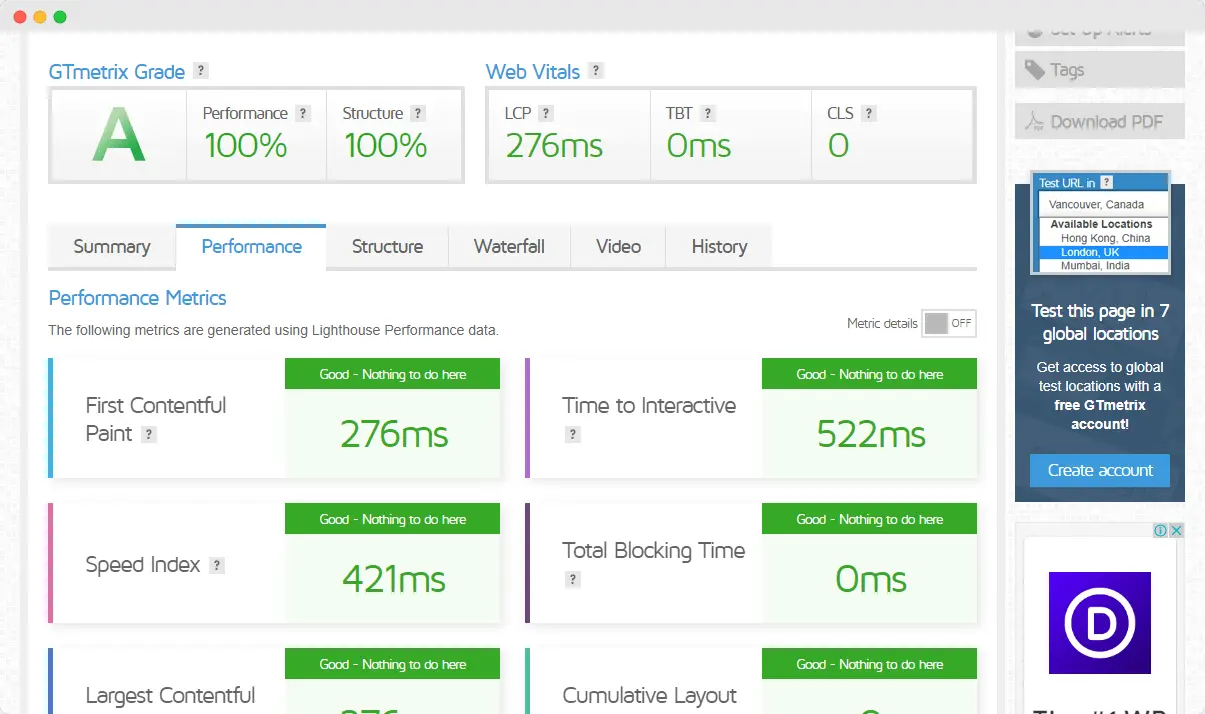
GTmetrix combines Google’s PageSpeed Insights and Yahoo’s YSlow metrics to analyze a website’s speed and provide actionable recommendations. It presents data in a visually pleasing and user-friendly manner, making it easy for users to pinpoint Performance bottlenecks. GTmetrix also offers historical data, allowing users to track Performance over time.
● Navigate to GTmetrix.
● Enter the website URL.
● Click “Test your site”.
You’ll receive a detailed report including the PageSpeed and YSlow scores, waterfall breakdown, and recommendations.
4. Pingdom Website Speed Test

A well-known name in website monitoring, Pingdom’s speed test tool provides an easy-to-understand Performance grade out of 100. Similar to WebPageTest, it offers a waterfall view of resource loading times. Here are the steps to check your coupon website speed.
● Go to Pingdom’s tool.
● Enter the URL and choose a test location.
● Click “Start Test”.
It provides data like load time, Performance grade, and a breakdown of page components.
5. Browser Developer Tools:
● Open your website in a browser like Chrome.
● Right-click on the page and select “Inspect” or use Ctrl+Shift+I (Windows/Linux) or Cmd+Option+I (Mac).
● Go to the “Network” tab.
● Reload the page.
Here, you can see a waterfall of all resources loaded on the page and their respective load times. This can help identify bottlenecks or resources that take a long time to load.
10 Best Practices to Improve Speed WordPress Coupon Website
1. Optimize the number of plugins
Let’s understand what it means to optimize the number of plugins on a website:
Why should we optimize them?
Think of your website as a backpack. Every plugin is like an item in the backpack. The more items you have, the heavier it gets, and the slower you might walk. Similarly, having too many plugins can slow down your website.
How to optimize?
● Check What You Have: Look at all the plugins you have installed.
● Remove Unused Plugins & Themes: If there’s a plugin and theme you don’t use or need, it’s best to remove it.
● Choose Multipurpose Plugins: Some plugins do many things at once. Using these can help you reduce the total number of plugins you need.
● Update Regularly: Make sure your plugins are up to date. Developers often make updates to make plugins faster and safer.
Remember, it’s not just about having fewer plugins but about choosing the right ones and keeping them in good shape. A well-organized website with optimized plugins runs smoother and faster!
2. Turn On GZIP Compression for Faster Loads
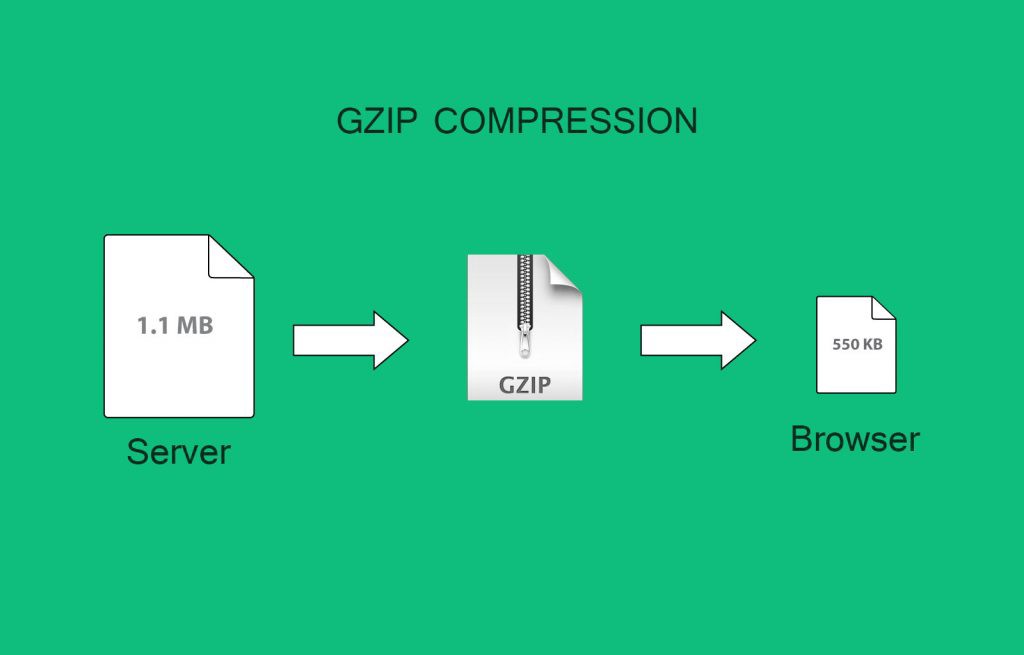
What is GZIP Compression?
Imagine you have a big box of clothes. If you push the air out and pack them tightly, you can fit more clothes into the box. GZIP compression works similarly for your website. It “squeezes” your website’s data to make it smaller, so it travels faster from your coupon website to visitors’ screens.
Why is it Helpful?
● Faster Website: When data is compressed, it takes less time to reach the visitor’s device. This means your coupon website pages will load quickly.
● Uses Less Data: People with limited data plans will appreciate this. Your deals website will use less of their data when compressed.
● Improved User Experience: Everyone likes fast websites. By turning on GZIP compression, visitors will have a smoother and more enjoyable experience.
How to Use GZIP Compression?
● Check with Your Hosting: Some web hosting services automatically turn on GZIP compression. If not, they can guide you on how to enable it.
● Use Plugins: If your coupon website is on WordPress, there are plugins available that can help you turn on GZIP compression easily.
In simple terms, GZIP compression makes your coupon website lighter and faster, giving your visitors a better experience. It’s like sending a letter in the mail: if it’s lighter, it gets there faster!
3. Delete Unused Media Files and Reduce Server Load
What are Media Files? Media files are the pictures, videos, and audio clips you’ve uploaded to your website. Just like photos on your phone, over time, you might have many you don’t use or need anymore.
Why Delete Unused Media Files?
● Speed Up Your Site: Think of your coupon website as a room. The more stuff you have in it (like old photos and videos), the harder it is to move around quickly. Removing extra media makes your website “room” more spacious and faster.
● Save Storage Space: Web hosting gives you a set amount of space (like a storage unit). If you’re storing many old media files, you’re using up precious space you might need later.
● Keep Things Organized: Just like decluttering your home makes it easier to find things, cleaning out old media files makes managing your website simpler.
How to Delete Unused Media?
● Manual Cleanup: Regularly check your media library and delete files that are no longer in use.
● Use Tools: If you have a WordPress Coupon website, there are plugins that can help identify and remove unused media files for you.
In simple terms, regularly clearing out old and unused media from your website is like cleaning out an old closet. It gives you more space, helps your website run faster, and makes things easier to manage. Less clutter, more speed!

4. Refine Images & Use Lazy Loading
Why Refine Images?
● Speed: Big, heavy images take longer to show up on the screen. By making them smaller and lighter, they’ll appear faster, making your website feel snappier.
● Looks Better: Properly sized images will look crisp and clear on all devices, giving your coupon website a professional touch.
Why Use Lazy Loading?
● Faster Initial Page Load: Because only the visible images load right away, the initial view of the coupon website is faster.
● Saves Data: For visitors with limited internet data, lazy loading ensures they only use data for images they actually see.
How to Implement?
1. Analyze Images: Use tools like Image Size Info to identify oversized images on your site.
● Optimize Images: Resize to fit display size and compress using tools like TinyPNG. If you’re using WordPress, plugins like Smush or ShortPixel can automate the optimization process.
● Choose Modern Formats: Save images as WebP for better quality at reduced file sizes.
● Routine Maintenance: Make it a habit to optimize images before uploading them to your website.
Periodically check older images to see if they can be further optimized with newer techniques or tools.
2. Enable Lazy Loading: For WordPress, use plugins like a3 Lazy Load. For other platforms, integrate scripts like lozad.js.
● Test & Review: After implementation, test your site to ensure images load properly and smoothly as users scroll. Make it a habit to optimize images before uploading them to your website.
By following these steps, your website’s speed and user experience will be noticeably improved, especially for pages with many images.
5. Minimize URL Redirections
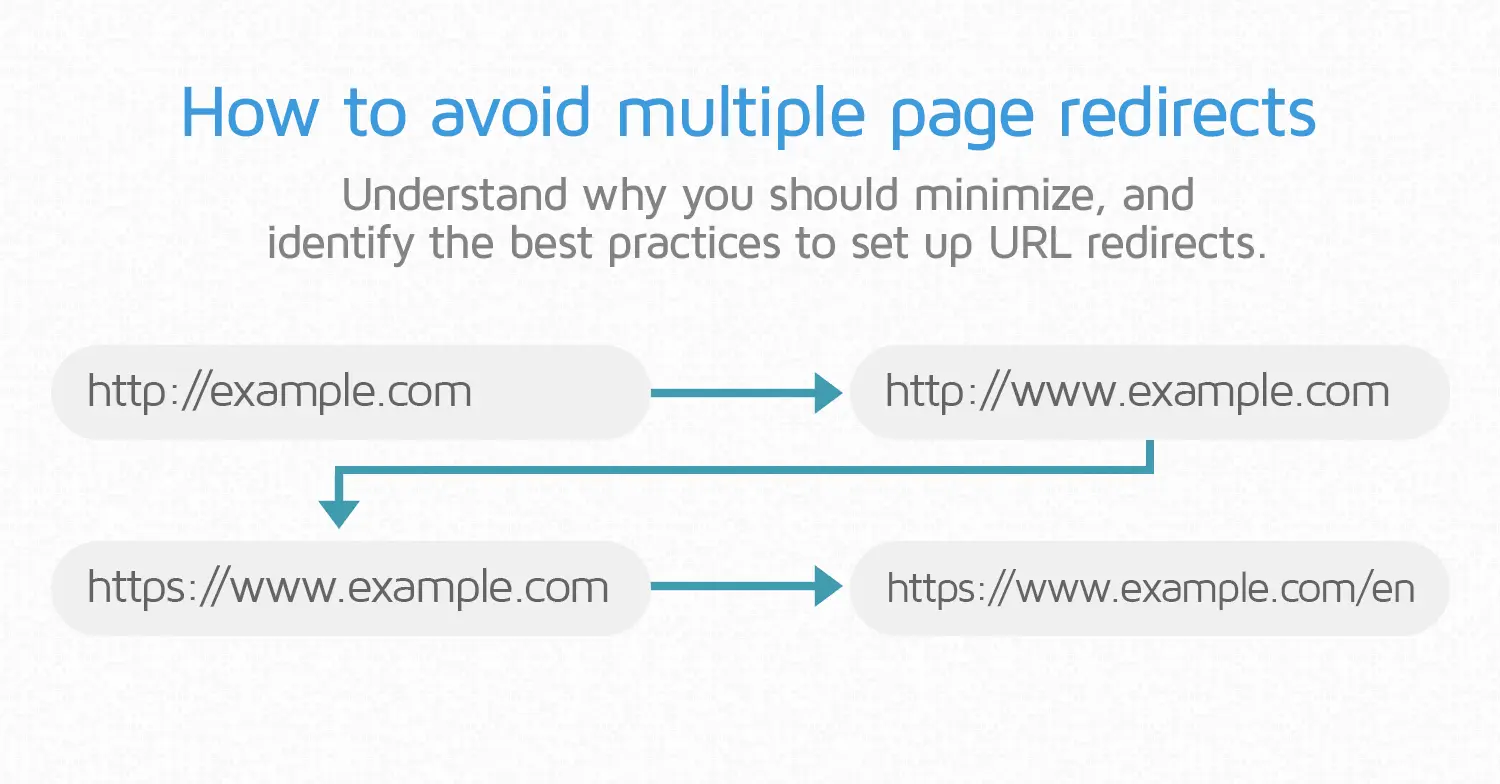
Redirects are essential in some cases, like when you’ve moved or deleted pages. However, excessive or unnecessary redirects can slow down your website. Let’s understand why minimizing URL redirections is important and how to do it.
1. Why It Matters:
● Each redirect can cause a delay, making a page load slower.
● Multiple consecutive redirects magnify this delay, leading to a frustrating user experience.
● Search engines might find it harder to crawl and index pages with excessive redirects.
2. Common Redirects to Know:
● 301 (Permanent) Redirect: Indicates that the page has moved permanently to a new location.
● 302 (Temporary) Redirect: Indicates a temporary move that might be reverted in the future.
● Meta Refresh: A slower, client-side redirection is often discouraged due to its impact on user experience.
3. How to Reduce Redirections:
a. Check Current Redirections:
● Use online tools to see which pages on your site have redirections. Some free tools can help with this.
b. Remove Unneeded Ones:
● If a page has moved only once, just one signpost should be pointing to its new location. If there are more, remove the extras.
c. Update Old Links:
● If you’ve moved a page, make sure all links on your site point to its new location, not the old one.
d. Avoid Using Too Many Short Links:
● Shortened links, like the ones from bit.ly, are also redirections. They’re okay for sharing on social media, but try not to use them on your main website.
e. Avoid Redirects for Critical Resources:
If a resource, like a CSS file or script, has moved, update the reference in your site’s code rather than using a redirect.
f. Regular Check-ups:
● Every once in a while, look for any new redirections on your site and clean them up.
● As your deals website evolves, ensure you’re not unintentionally adding new redirect chains.
In essence, while redirects are sometimes necessary, they should be used judiciously. By minimizing URL redirections, you can ensure faster page loads, a better user experience, and smoother website operations.
6. Limit the Use of External Scripts
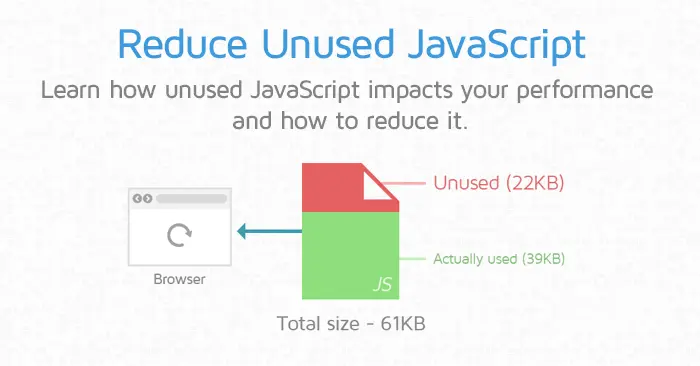
When we talk about “external scripts” in websites, we’re referring to pieces of code that come from other websites and are used on your site. These can be things like fonts, tools, or widgets. However, using too many external scripts can slow down your website. Let’s explore this in a simple way.
- Why Are External Scripts Used?
They can add features to your website without you having to create them from scratch. For example, a weather widget or social media buttons. - Why Should We Limit Them?
- ● Each external script is like an extra item on your shopping list. The more items, the longer the checkout time.
- ● They can make your coupon website rely on other sites. If one of those sites has a problem, it might affect your site, too.
- Steps to Limit External Scripts:
a. Audit Your Coupon Site:
- ● Use tools like Google Chrome’s Developer Tools to see which external scripts are currently running on your WordPress coupon website.
b. Prioritize Essential Scripts:
- ● From your list, identify which scripts are crucial for your coupon website’s functionality or user experience.
c. Remove Non-Essentials:
- Get rid of any script that isn’t absolutely necessary. Each removal will likely speed up your site.
d. Host Scripts Locally:
- ● For scripts that you decide to keep, check if you can download and host them on your own server instead of linking externally.
e. Opt for Asynchronous Loading:
- ● Adjust the code of the remaining scripts so they load in the background or after the main content. This can often be done by adding the “async” attribute to the script tag in your HTML.
f. Update Regularly:
- ● Make a schedule to periodically check and update scripts to ensure they’re current and still needed.
By following these steps, you’ll reduce dependencies, improve website speed, and provide a smoother experience for your visitors.
7. Remove unnecessary pop-ups
Pop-ups can be handy for things like newsletter sign-ups or special promotions. However, too many of them, or poorly timed ones, can frustrate your visitors. Here’s an easy-to-follow guide on why and how to trim down those pop-ups.
- Why Reduce Pop-ups?
- ● User Experience: Too many pop-ups can annoy your visitors, making them want to leave.
- ● Mobile Users: Pop-ups often don’t display well on mobile devices, causing viewing issues.
- ● SEO Impact: Search engines, like Google, may penalize sites with invasive pop-ups, especially on mobile.
- Action Steps to Remove Unwanted Pop-ups:
a. Evaluate Current Pop-ups:
- ● Check all the pop-ups on your site. Are they all needed? Are there any that get very few interactions or conversions?
b. Prioritize Pop-ups:
- ● Keep only the most important ones. Maybe it’s a sign-up form for your newsletter or a limited-time offer.
c. Adjust Frequency:
- ● If a pop-up is set to appear every time a page loads, consider reducing its frequency. Maybe show it once every few days per visitor.
d. Test and Monitor:
- ● After making changes, monitor user behaviour. Are they staying on your site longer? Are conversion rates improving?
e. Ensure Mobile Compatibility:
- ● If you keep any pop-ups, make sure they display and function well on mobile devices.
f. Consider Alternatives:
- ● Instead of pop-ups, think about using banners, slide-ins, or other less intrusive forms of notifications.
g. Regular Check-ups:
- ● Periodically revisit your pop-up strategy. As your coupon website evolves, so will your pop-up needs.
In summary, while pop-ups can be effective tools, it’s essential to use them sparingly and wisely. By removing unnecessary pop-ups, you’ll offer a more enjoyable browsing experience, potentially leading to longer visits and higher conversions.
8. Ease up on Home page hero sliders
Homepage hero sliders, also known as carousels, have been a popular design choice for many websites. The website’s front page features multiple pieces of content. User experience and website Performance can be negatively affected if these sliders are overused or improperly used. Here’s a clear guide on the topic.
- Why Rethink Hero Sliders?
- ● Attention Dilution: With multiple slides, you’re dividing the visitor’s attention. Often, a singular, focused message is more impactful.
- ● Mobile Browsing: Sliders can be problematic on mobile devices, leading to distorted images or slow load times.
- ● SEO Concerns: Search engines prefer clear, focused content. Sliders can sometimes dilute keyword relevance.
- ● Performance: Multiple high-resolution images on a slider can slow down page loading times.
- Actionable Steps to Improve Homepage Design:
a. Single Focused Image:
- ● Replace the slider with one strong, relevant image that encapsulates your site’s main message or offer.
b. Use Static CTAs:
- ● Instead of multiple calls to action across different slides, have a single, clear Call-to-Action (CTA) that guides the user.
c. Test Load Times:
- ● Ensure your home page loads quickly, especially if you’ve been using a slider with multiple high-resolution images. Tools like Google’s Page Speed Insights can help.
d. Gather Feedback:
- ● Use tools or surveys to get user feedback. Sometimes, visitors might find static images more appealing than rotating sliders.
e. Responsive Design Check:
- ● If you opt for any visual elements, ensure they display correctly across all devices, especially mobile phones.
f. Regular Updates:
- ● Even without sliders, it’s essential to keep the homepage content fresh and relevant to users.
e. Consider Modern Alternatives:
- ● Explore design trends like parallax scrolling, video backgrounds, or interactive elements that can be more engaging and user-friendly than traditional sliders.
To wrap up, while homepage hero sliders had their time in the limelight, the focus now is on clear messaging, user experience, and website Performance. Reassessing the need for a slider and considering modern design alternatives can lead to a more effective and user-friendly homepage.
9. Use the latest PHP version
- Why Update to the Latest PHP Version?
- ● Performance Boost: Newer PHP versions are often faster, making your website load quicker.
- ● Enhanced Security: Updates usually fix vulnerabilities, keeping your site safer from hacks and breaches.
- ● New Features: Enjoy benefits and features that can enhance your WordPress coupon website’s capabilities.
- ● Compatibility: Modern plugins and themes often require recent PHP versions to function correctly.
Steps to Update PHP:
- Backup: Before doing anything, make a copy of your whole website. If things break, you can use the copy to fix it.
- Which Version? Find out which PHP version you’re using now. You can usually see it in your website’s control area.
- Update: Go to where your deals website is hosted. There should be an option to pick a new PHP version. Choose the newest one.
10. Minify HTML, CSS, and Javascript code
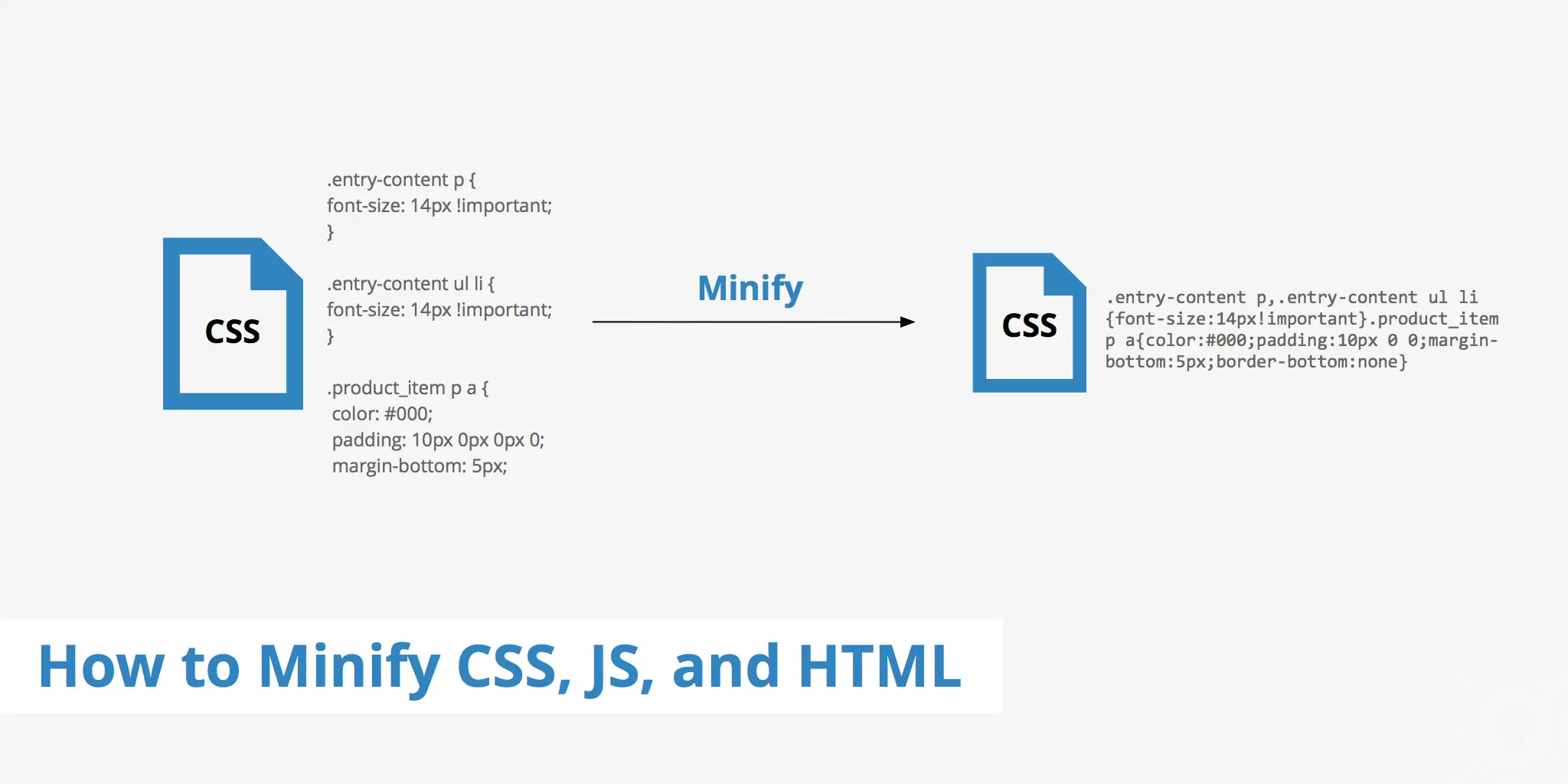
What is Minifying? Think of minifying like packing a suitcase. When you pack clothes tightly, you fit more in. Similarly, minifying makes your website’s code tighter by removing extra spaces and lines.
1. Create a Backup:
- ● Use a plugin like UpdraftPlus or BackupBuddy to save a complete copy of your WordPress site.
2. Choose a Minification Plugin:
- ● WordPress has several plugins that can help with minifying. Some popular choices are Autoptimize, W3 Total Cache, and WP Super Minify.
3. Configure the Plugin:
- ● Each plugin will have its own settings. Generally, you’ll find an option to minify JavaScript, CSS, and HTML. Make sure those are enabled.
4. Test Your Site:
- ● After activating and configuring the plugin, visit your website.
- ● Ensure all the features and design elements appear correctly.
5. Monitor Performance:
- ● Use a tool like PageSpeed Insights or GTmetrix. These will show you how well your site performs and confirm if the minification is effective.
6. Additional Tweaks (if needed):
- ● Depending on your theme and other plugins, you might encounter conflicts. If something doesn’t work correctly, adjust the plugin settings or consider trying a different minification plugin.
7. Regular Maintenance:
- ● WordPress, themes, and plugins receive updates regularly. After updating, it’s a good practice to test your site and ensure the minification still works correctly.
Final Tip: Minification is just one piece of website optimization. You might also consider using caching plugins, image optimization tools, and a content delivery network (CDN) to further enhance your site’s Performance.
With these steps, your WordPress site should load faster, offering a better experience for your visitors.
Use a lightweight coupon theme and SEO-optimized theme. If you have no idea how to select a theme visit this like to help select the perfect theme.
13 Best WordPress Coupon Themes for 2023 (SEO-friendly)

Conclusion
Optimizing your WordPress coupon website for speed doesn’t have to be an overwhelming task. By implementing the advanced tips mentioned above, you can significantly enhance your website’s speed and provide a better user experience. Remember, a fast-loading coupon website not only pleases your visitors but can also result in better search engine rankings, leading to more traffic and conversions.
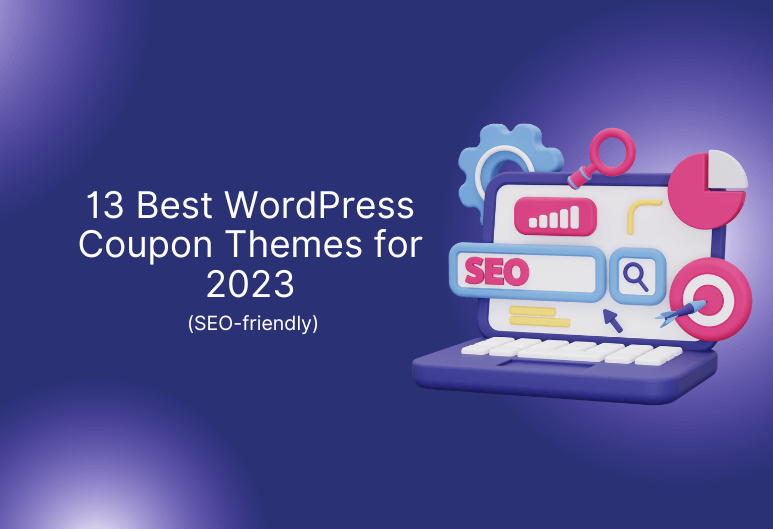
13 Best WordPress Coupon Themes for 2023
Coupon & deals websites are going to thrive in 2023. More and more people are shopping online specifically after the COVID-19 pandemic.

Jiomart Affiliate Program Detailed Guide (Step-by-step)
Have you ever heard about E-commerce Affiliate marketing programs?
